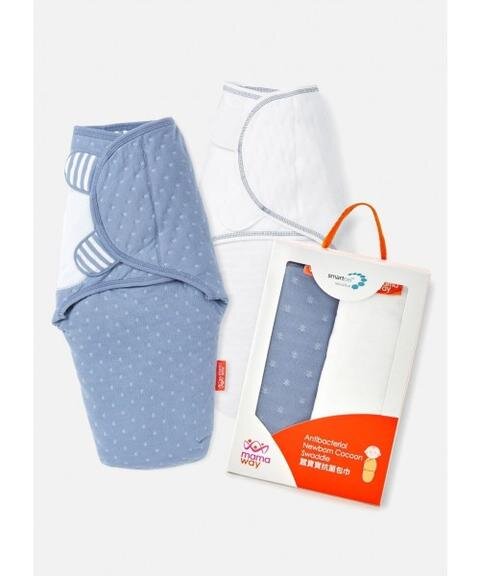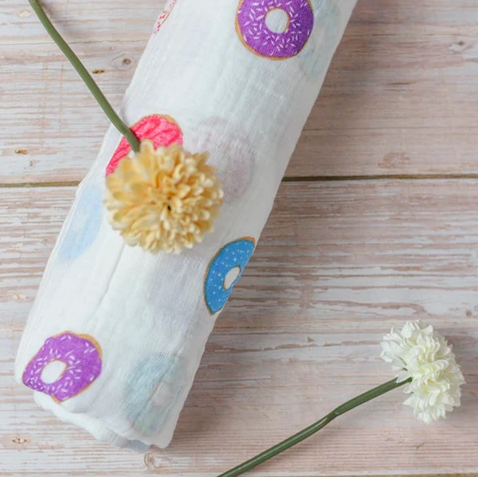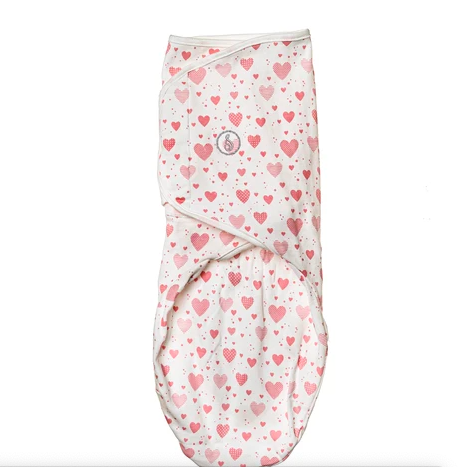by Adrienne Antoinette S. Buenaventura
Swaddling is an ancient practice of wrapping infants in cloth to keep them comfortable and warm, creating a cozy and secure feeling of being in the womb. It helps calm babies when they startle themselves awake at night. Babies with colic and those born with neurologic problems or babies born addicted to drugs may find swaddling very comforting and helpful.
While swaddling can decrease crying and promote baby’s sleep, doctors at the American Academy of Pediatrics say that safe swaddling should be discussed with parents.
-
Pediatricians should instruct parents to keep blankets loose around the hips.
This can prevent Hip Dysplasia, an abnormal formation of the hip joint where the top of the thigh bone is not held firmly in the socket of the hip.
It is the recommended by the International Hip Dysplasia Institute that “infant hips should be positioned in slight flexion and abduction,” which indicates that the baby is given free movement in the hips and legs. Moving their hips and legs freely can aid in proper hip development.
“Hip-healthy swaddling” is when the baby’s legs are allowed to bend up and out while in the swaddle. It is ideal that a parent is able to get at least two or three fingers between the baby’s chest and the swaddle.
-
Swaddling should be snug, but not too tight, and the swaddle should allow the baby to breathe freely. Sweating, heat rash, flushed cheeks, and damp hair are signs that the baby is swaddled too tightly and feeling hot.
-
It is important to place the baby to sleep on his back. This is to reduce the risk of Sudden Infant Death Syndrome, or SIDS, or accidental deaths due to suffocation or strangulation.
Dr. Rachel Y. Moon, the chairman of the Task Force on SIDS at the American Academy of Pediatrics emphasizes creating a safe sleep environment, saying that “Some babies roll on their stomachs. You should always place your baby to sleep on his back, but if your baby is comfortable rolling both ways (back to tummy, and tummy to back), then you do not have to return your baby to the back. However, be sure there are no blankets, pillows, or stuffed toys or bumper pads around your baby, so that your baby does not roll into any of those items, which could block airflow.”
-
Infant sleep clothing, like a wearable or sleep sack, is preferred over blankets to keep a baby warm. However, the use of wearable sleep sacks should stop once the parents observe that their baby is trying to roll over, or kick free from the swaddle, usually at 2 months of age.
Parents who stop swaddling their babies often ask how to get their babies to sleep without the swaddle, and here are a few options:
-
Create a relaxing bedtime ritual for your baby. A predictable routine like a bath, lullabye, feeding, or rocking can calm your baby, and hopefully, fall asleep.
-
Dim the lights to create a sleep-inducing atmosphere.
-
Give your baby a gentle massage to soothe him to sleep.
The American Academy of Pediatrics gives specific instruction on how to swaddle correctly:
-
To swaddle a baby, spread the blanket out flat, with one corner folded down.
-
Lay the baby face-up on the blanket, with her head above the folded corner.
-
Straighten her left arm, and wrap the left corner of the blanket over her body, and tuck it between her right arm and the right side of her body.
-
Then tuck the right arm down, and fold the right corner of the blanket over her body and under her left side.
-
Fold or twist the bottom of the blanket loosely and tuck it under one side of the baby.
-
Make sure her hips can move and the blanket is not too tight.
For more advice on swaddling, seek assistance and guidance from your pediatrician.
Looking for the perfect swaddle? Mommy Mundo has you covered! Click on the swaddle to learn more!
About the author
Adrienne Sarmiento-Buenaventura is a freelance writer and singer-songwriter, with two professional albums as a recording artist. She is a staunch advocate of Original Filipino Music and hands-on parenthood. She sings with her band WINK* and is a worship leader at church. She loves creative collaboration, quirky vintage finds, poetry, a well-prepared meal, and traveling with her husband and two children. When asked what she does for a living, she says, “I use my authentic voice to supply interesting and insightful content that influences and inspires people to get excited, think and move. I ask the right questions and make use of my unique resources, and I do this with focus, passion, and integrity.”





Leave a Reply